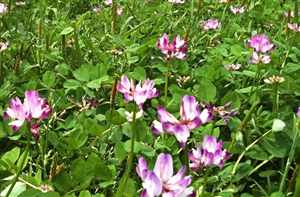Astragalus (Astragalus propinquus, Astragalus membranaceus), Milk Vetch
Main Facts about Astragalus

Using Astragalus
In traditional Chinese medicine it is used to speed healing and treat diabetes. In western herbal medicine, Astragalus is primarily considered a tonic for enhancing metabolism and digestion. It is also traditionally used to strengthen the immune system and in the healing of wounds and injuries. An extract from the root has been shown to boost and restore the immune system. Studies have shown it to even help restore the immune system of people who have undergone chemotherapy. It is may be useful as a complementary treatment during chemotherapy, radiation therapy and immune deficiency syndromes. Extremely useful remedy for physical weakness and drained energy conditions like chronic fatigue and exhaustion. Works great when used together with Ginseng. Good for reducing night sweats and fluid retention.There is also evidence for cardiovascular system improvement, particularly in some clinical cases of angina, congestive heart failure, and acute myocardial infarct. This may be due to the herb's antioxidant activity. Beneficial to gastrointestinal tract.Astragalus is a remedy for: Cold and flu
Caution!
Astragalus may interact with medications that suppress the immune system, such as cyclophosphamide. It may also affect blood sugar levels and blood pressure.Cooking with Astragalus
Roots can be sliced and simmered in stews, soups, and broths. Astragalus is consumed as a tea or soup made from the roots of the plant (usually dried), often in combination with other medicinal herbs.How to grow Astragalus
Astragalus prefers partial shade to full sun, and a sandy, well-drained soil. Water moderately. Astragalus seeds require a 21-day cold period of stratification to promote germination, followed by mild scarification with fine-grade sandpaper. Before sowing seeds, soak in water for an hour to soften and tamp lightly in to the soil, or cover with a thin layer (1/8-1/4" deep). Astragalus grown from seed requires at least two years of growth to produce rootstock of adequate size for medicine making.| Asparagus |
Avocado
|